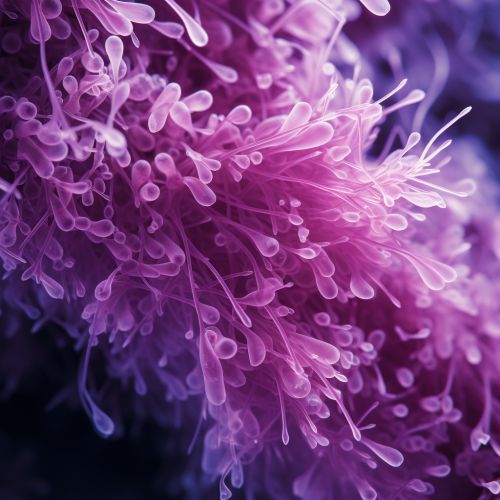Enterobacteriaceae
Introduction
The Enterobacteriaceae are a large family of Gram-negative bacteria that includes, along with many harmless symbionts, many of the more familiar pathogens, such as Salmonella, Escherichia coli, Yersinia pestis, Klebsiella and others. This family is the only representative in the order Enterobacteriales of the class Gammaproteobacteria in the phylum Proteobacteria.
Classification
Enterobacteriaceae includes, along with many harmless symbionts, many of the more familiar pathogens. The family includes the genera Escherichia, Shigella, Salmonella, Yersinia, Klebsiella, Proteus, Enterobacter, Serratia, and Citrobacter. This family is the only representative in the order Enterobacteriales of the class Gammaproteobacteria in the phylum Proteobacteria.
Characteristics
Enterobacteriaceae are gram-negative, rod-shaped bacteria that are facultative anaerobes, fermenting sugars to produce lactic acid and various other end products. Most also reduce nitrate to nitrite in the anaerobic respiration process. The production of catalase distinguishes the Enterobacteriaceae from the lactic acid bacteria.


Pathogenesis
Enterobacteriaceae are a large family of bacteria that includes many pathogens. These bacteria can cause a wide range of infections, including urinary tract infections, respiratory tract infections, skin and soft tissue infections, and septicemia. The mechanisms of pathogenicity and the virulence factors vary by genus and species.
Treatment
The treatment of Enterobacteriaceae infections depends on the species and the site of infection. Antibiotics are commonly used, but the increasing incidence of antibiotic resistance in these organisms is a major concern. In some cases, multidrug-resistant strains have been identified, necessitating the use of newer antibiotics or combination therapy.
Epidemiology
Enterobacteriaceae are ubiquitous in nature and can be found in the gut microbiota of humans and animals. They are also common in the environment, including in soil, water, and plants. The spread of these bacteria is facilitated by their ability to survive in a wide range of conditions and their resistance to many common disinfectants.
Research
Research into Enterobacteriaceae is ongoing, with scientists studying their pathogenicity, resistance mechanisms, and potential uses in biotechnology. The family's wide range of metabolic capabilities makes it an interesting subject for research in microbial ecology and evolution.
